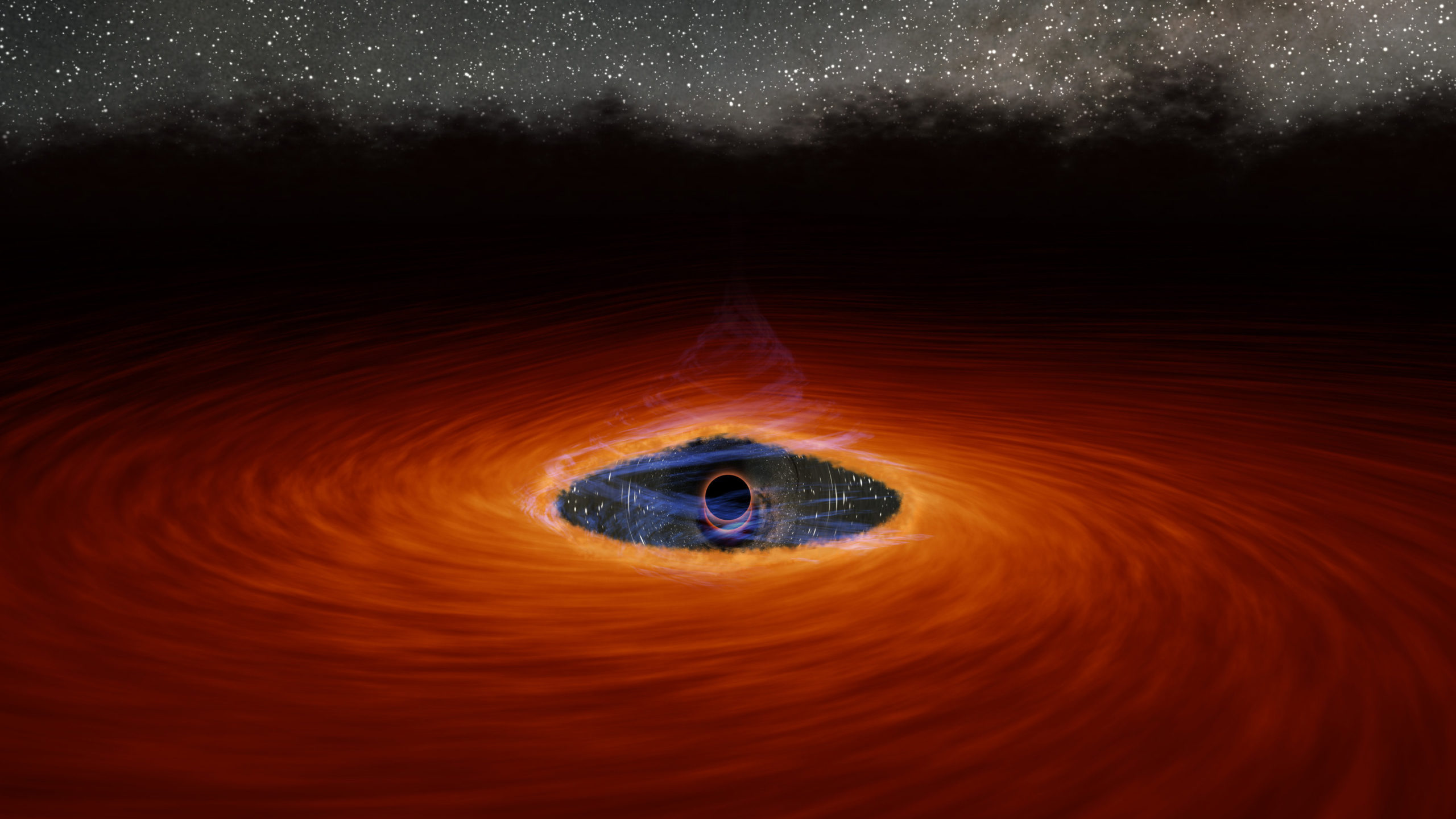Two years ago, astronomers watched in confusion as the corona of a supermassive black hole quickly faded from view, only to reappear a few months later. New research suggests this strange episode was caused by a runaway star.
Supermassive black holes are located in the centres of galaxies, and, like ordinary black holes, they don’t give off any light. That said, they’re often surrounded by a swirling ring of gas, called an accretion disk, which causes their surroundings to shine rather brightly. Coronas — halos of high-energy particles that generate X-ray light — also betray the presence of supermassive black holes, as this radiation can be detected from Earth.
In 2018, the corona of a supermassive black hole at the core of 1ES 1927+654, a galaxy located some 100 million light-years away, disappeared.
“We expect that luminosity changes this big should vary on timescales of many thousands to millions of years,” Erin Kara, a co-author of the new study and an assistant professor of physics at MIT, explained in a press release. “But in this object, we saw [its luminosity drop] by 10,000 over a year, and it even changed by a factor of 100 in eight hours, which is just totally unheard of and really mind-boggling.”

Then, over the course of the next few months, the X-ray corona came back into view, shining as brightly as it had before. Kara said it’s the “first time we’ve ever seen a corona first of all disappear, but then also rebuild itself, and we’re watching this in real-time.”
Importantly, and as the new paper in Astrophysical Journal Letters points out, astronomers detected an unusually bright flash shortly before the coronal dimming began. As recorded by the All-Sky Automated Survey for Super-Novae (ASSASN), this flash was roughly 40 times brighter than the galaxy’s normal luminosity. Alerted to the event, astronomers at several other telescopes began to study this active galactic nucleus, observing it in other wavelengths, including optical and ultraviolet.
It was only after this rather intense outburst that the black hole’s corona began to vanish from view. Eventually, “it became undetectable, which we have never seen before,” said Kara in the MIT press release.
As the new paper suggests, this vanishing act happened because the black hole was no longer gobbling up material nearby, and its supply of food, so to speak, had suddenly been cut off. To explain this, the researchers posited a theory in which a star collided with the black hole.
In this scenario, the wayward star, having been knocked out of its usual orbit by some event, hurtled toward the black hole and was torn to shreds by its intense gravitational pull, causing debris to scatter across the accretion disk. This fast-moving debris then dispersed some of the gas, creating a temporary gap between the black hole and the accretion disk.
“We just don’t normally see variations like this in accreting black holes,” said Claudio Ricci, the lead author of the study an an astronomer at Diego Portales University in Santiago, Chile, in a NASA statement. “It was so strange that at first we thought maybe there was something wrong with the data. When we saw it was real, it was very exciting. But we also had no idea what we were dealing with; no one we talked to had seen anything like this.”
Eventually, this gap was closed, and the corona was back in action, according to this theory.
[referenced url=”https://gizmodo.com.au/2020/06/a-black-hole-collided-with-something-that-shouldnt-exist/” thumb=”https://gizmodo.com.au/wp-content/uploads/2020/06/24/yorf8xbdrp9jyyzmbprn-300×168.jpg” title=”A Black Hole Collided With Something That Shouldn’t Exist” excerpt=”Astronomers are puzzling over observations that show a black hole smashing into a mystery object of unusual size.”]
The wayward star hypothesis fits nicely with the observations, but it’s not an open-and-shut case. The astronomers haven’t been able to explain, for example, why the dimming appears to have happened in bursts, rather than a gradual decay. There’s also the role of the black hole’s magnetic field lines to consider, which may play an important role in both generating and supporting high-energy coronas.
“This dataset has a lot of puzzles in it,” said Kara. “But that’s exciting, because it means we’re learning something new about the universe. We think the star hypothesis is a good one, but I also think we’re going to be analysing this event for a long time.”
